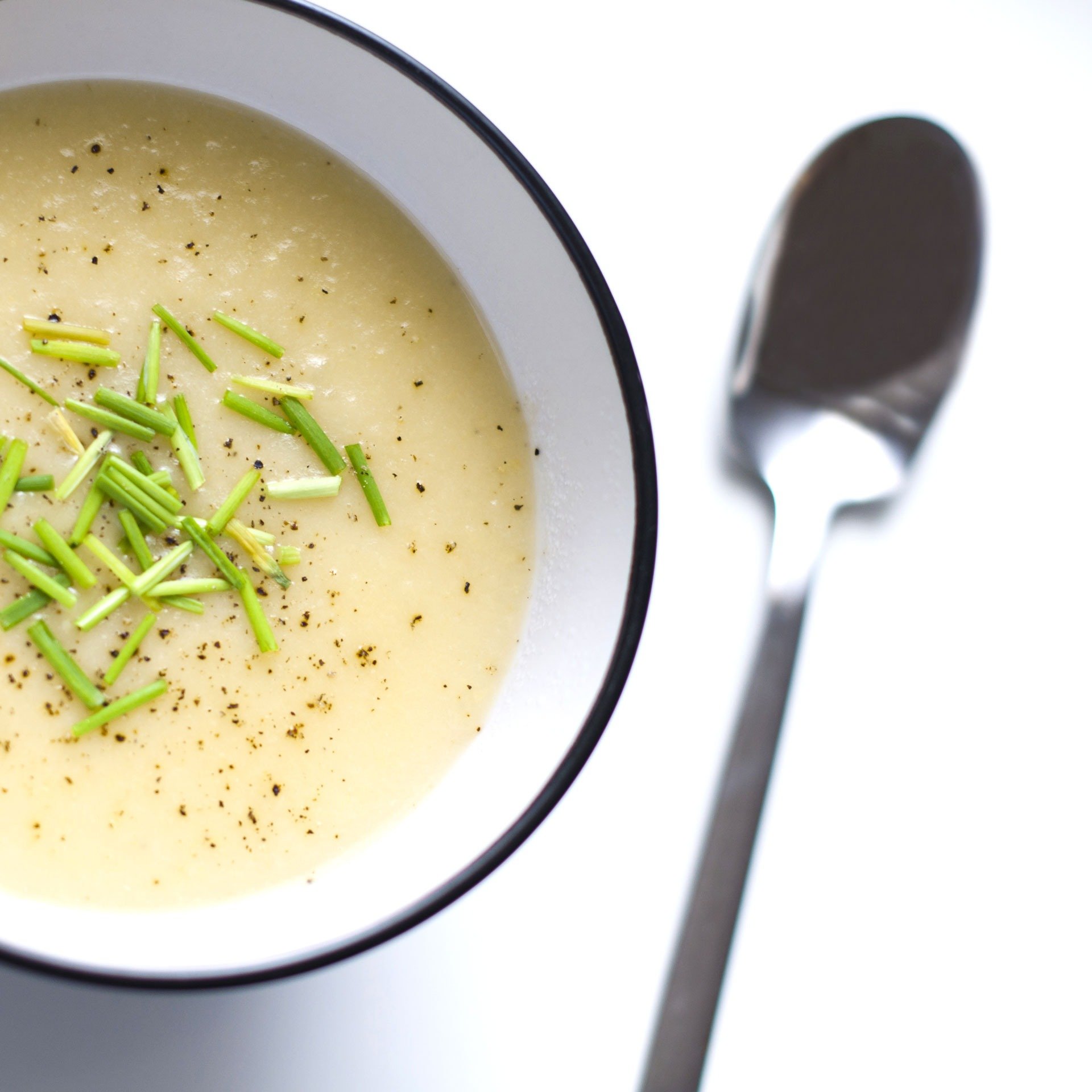Real Food Encyclopedia | Kohlrabi
Kohlrabi, that knobby, alien-looking farmers’ market find, is a member of the Brassicaceae (also known as Cruciferae) family, that versatile group of vegetables that includes kale, cabbage, broccoli, Brussels sprouts, bok choy, cauliflower, turnips, radishes, horseradish, mustard, arugula and rapeseed (aka, canola).
The kohlrabi “root” is actually the swollen stem of the plant that grows above ground, topped by leaves resembling kale or collards. Fast growing and easy to cultivate, kohlrabi is becoming more popular in the US, but its strongest foothold is in Germany, Eastern Europe and India.
Fun facts about kohlrabi:
- In German, kohl means “cabbage” and rübe (rabi) means “turnip.”
- Other names for kohlrabi include “Kohl-Rabi,” “German Turnip,” “Stem Turnip” and “Cabbage Turnip.”
What to look for when buying kohlrabi
Kohlrabi comes in two varieties: one deep purple and the other vibrant green. Both have pale green to white flesh. The bulb should be firm with no spongy bits and no visible brown spots. If leaves are still attached, they should be sprightly, green and free of wilt or mold.
Meta Given’s “Modern Encyclopedia of Cooking,” from 1947, is a wealth of information about selecting kohlrabi. In the cookbook, Givens says that, grown under ideal conditions (cooler weather and abundant moisture), “the ball is so tender that the skin is easily pierced with the thumbnail and strips off like the skin from a tangerine.” (n.b., Givens also has recipes for “Kohl-Rabi with Peanut Butter Sauce,” “Buttered [boiled] Kohl-Rabi” and the more-delicious sounding “Kohl-Rabi with Cheese Sauce.”)
Younger kohlrabi are more tender, while older kohlrabi tend to be woodier. You can differentiate between young and old primarily by size — younger kohlrabi are smaller, usually between 2 to 3 inches in diameter. Kohlrabi should be spherical in shape. Stay away from kohlrabi that are tapered, as they also tend to be woodier.
Sustainability of kohlrabi
Kohlrabi are susceptible to the same diseases and pests as other members of the cabbage family, so pesticides to control fungi and insects may be applied. The good news is that Its relative obscurity — stateside, at least — means that demand is low enough to keep kohlrabi a product grown on a small (and often more sustainable) scale.
If you are concerned, the best thing to do is ask your local kohlrabi farmer about his or her growing practices.
Seasonality
Kohlrabi are available in most U.S. markets from late spring through late autumn. In many areas, the vegetable can only be found at farmers’ markets, CSAs and smaller grocery stores (like food co-ops). Note that kohlrabi prefers cooler weather, so summer-harvested kohlrabi may be woodier than those grown in the spring and fall. In warmer climates, kohlrabi may be available into the winter and may even have two growing seasons.
Eating kohlrabi
Storing
Kohlrabi bulbs will keep in your refrigerator’s veggie drawer for several weeks. Note that the bulbs tend to become woodier the longer you store them. Remove the leaves before storing. If your kohlrabi have the leaves attached when you buy them, wrap the leaves in damp paper towels and store no longer than two to three days, as they lack the staying power of the bulb.
Cooking
The biggest barrier to frequent kohlrabi consumption is peeling the pesky bulb. The little knobby bits (where the leaves were attached) make using a vegetable peeler virtually impossible. Unless you are lucky to find a specimen whose skin peels off like a tangerine, you’ll have to break out your finest paring knife to get the skin off. Larger kohlrabi will have a woody interior beyond the skin that will need to be pared away, too (you’ll notice the change in texture as you pare). Trim off the stem end first, and then pare the skin and any woody interior parts away. Depending on the shape your recipe calls for, you may find that quartering your cabbage-turnip first will help the peeling process. The smallest kohlrabi may have skin tender enough that peeling is not necessary.
A versatile veggie, both the bulb and the leaves are edible. The bulb can be quartered and roasted like potatoes (toss with olive oil and salt and pepper first), pureed (especially nice mixed with potatoes), gratinéed with cheese, steamed, grilled or simply thinly sliced raw and tossed with olive oil, lemon juice, and salt and pepper. Kohlrabi also makes a delicious slaw, grated or cut into thin matchsticks. Cook kohlrabi leaves like you would other leafy greens, by either boiling for a few minutes in salted water, or by sautéing with olive oil and garlic until tender. The leaves can be eaten raw, tossed into a salad and are also delicious thrown into a stir-fry.
Preserving
Kohlrabi is a great candidate for preservation. It can be fermented like sauerruben (sauerkraut made with turnips) or pickled. It even freezes well: blanch peeled and sliced kohlrabi for 2 to 3 minutes, then drop in an ice-water bath to shock, pat dry and freeze.
Nutrition
Kohlrabi, like many of its Brassica brethren, are pretty good for you. The vegetable is very high in Vitamin C and fiber, and is a good source of Vitamin B-6 and potassium, too. It’s also fairly high in minerals, including copper and manganese. Kohlrabi is also low in calories, unless you mix it with flour and egg and fry it as in these pancakes. But hey, everything in moderation.
Top photo by elisafina/Adobe Stock.


